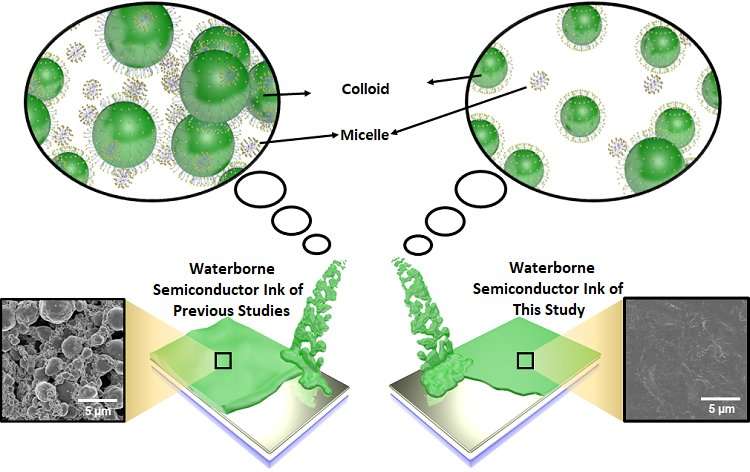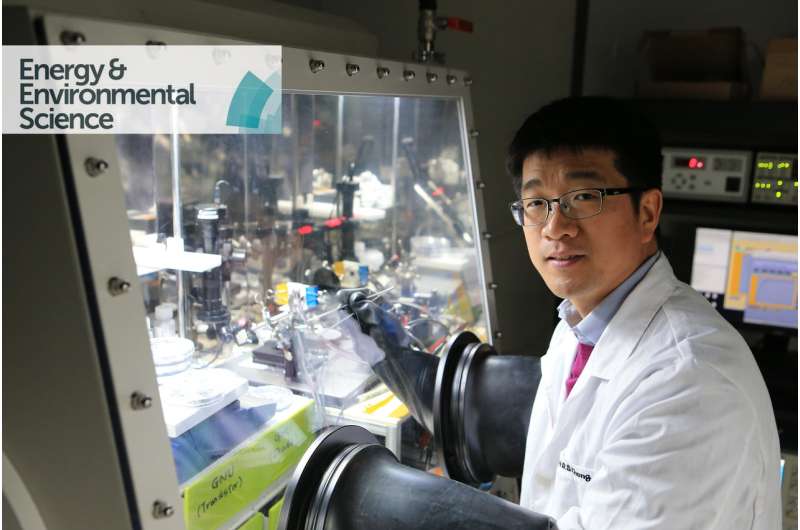Eco-friendly waterborne semiconductor inks using surfactant

A research team of Energy Science and Engineering at DGIST has developed a technology to produce environmentally friendly water-borne semiconductor inks using surfactants, additives that mix substances of different properties and are used in soap.
Polymer semiconductors are carbon compounds with the electrical properties of semiconductors. They are considered a next-generation material for flexible smart devices, not only because they are flexible and lightweight, but also because they can be processed at low cost through the solution process. However, they cause significant environmental pollution, as toxic organic solvents are used in the process.
Despite the limitations, the research team has developed a semiconductor surface control technique using surfactants for environmentally friendly semiconductor manufacturing processes that do not use toxic organic solvents. The group has produced water-borne semiconductor inks.
In the study, the newly developed waterborne semiconductor ink has small colloidal particles and fewer surfactant micelles compared to the waterborne semiconductor inks in previous studies. As a result, it has a relatively flat surface compared to the conventional waterborne semiconductor inks. The black and white image in the figure shows the comparison of the surface of the thin film made with the waterborne semiconductor ink developed in this study versus a conventional one.
According to the research team, the technique is expected to be applied in various electronic devices such as P-type and N-type transistors as well as PN diodes, complementary inverters, photodiodes as high-quality thin films.

Professor Chung says, "This research has fundamentally solved the environmental pollution problem generated during the production of organic semiconductors. We have developed a source technology that can disperse various semiconductor materials into water through simple chemical modification. We expect that it can be used in various optoelectronic devices ranging from transistors to solar cells, composite circuits, and image sensors."
More information: Jangwhan Cho et al, Universal selection rule for surfactants used in miniemulsion processes for eco-friendly and high performance polymer semiconductors, Energy & Environmental Science (2017). DOI: 10.1039/c7ee01943b
Journal information: Energy & Environmental Science
Provided by DGIST




















